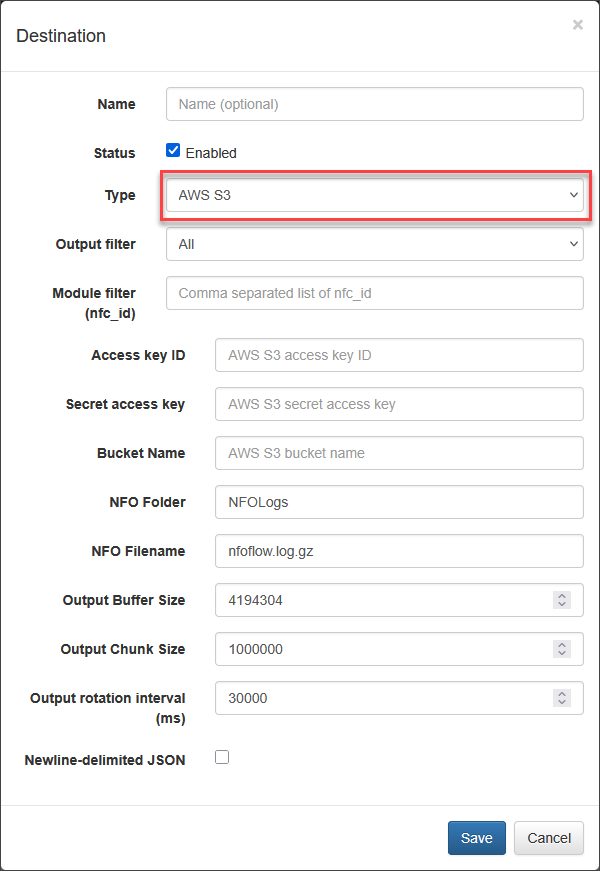AWS S3
Use this output type to send NFO data to Amazon S3 buckets.

Create an account in your AWS environment with with the following permissions:
s3:PutObject and s3:GetBucketLocation.
For example, inline policy may look like the following:
{
"Version": "2012-10-17",
"Statement": [
{
"Sid": "NfoS3Permissions",
"Effect": "Allow",
"Action": [
"s3:PutObject",
"s3:GetBucketLocation"
],
"Resource": [
"arn:aws:s3:::your-bucket-name"
"arn:aws:s3:::your-bucket-name/*"
]
}
]
}
When NFO writes output to AWS S3, the file is closed when one of the following occurs:
- The number of bytes in the file reached the buffer size parameter
- The file has the number of records specified in chunk size parameter
- On file rotation interval timeout
note
Access key ID and Secret access key are available here: AWS console > IAM > Users > select User name > Security credentials tab
| Parameter | Description |
|---|---|
| Access key ID | It is used to sign programmatic requests to AWS. See below |
| Secret access key | It is used to sign programmatic requests to AWS. See below |
| Bucket Name | Name of S3 bucket to send data to. You need to create this bucket in your AWS environment |
| NFO Folder | Name of AWS S3 folder (directory). This folder will be created by NFO |
| NFO Filename | Filename pattern used when S3 files are created, e.g nfo.log.gz creates S3 files as timestamp-nfo.log.gz |
| Output Buffer Size | Output buffer size, bytes. Min - 32,768 max - 268,435,456 default - 4,194,304 |
| Output Chunk Size | S3 output file chunk size, records. Min - 1, max - 10,000,000 default - 100,000 |
| Output rotation interval | S3 output file rotation interval, msec. Min - 1,000 max - 3,600,000 default - 30,000 |
| Newline-delimited JSON | If checked, NFO will send data in JSON format. By default (unchecked), the data is sent in files with a header line |